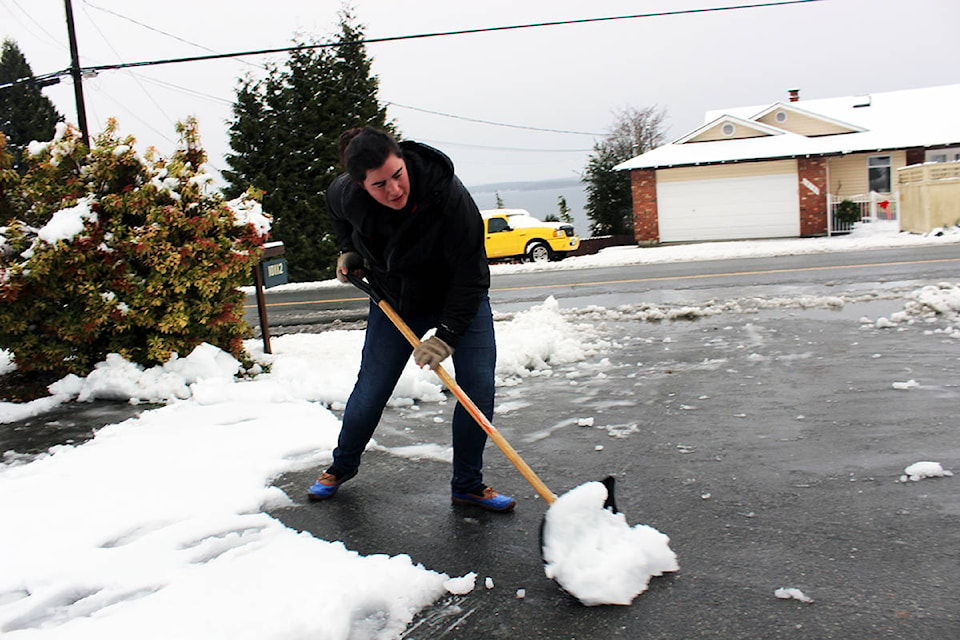December 21 has arrived, the first day of astronomical winter, which, as I like to note, arrives about three weeks after the meteorological cool-to-cold season as defined by weather professionals.
As many will know, it is also the shortest day of the year, the winter solstice. What might not be so well known however, is that the afternoons stopped getting shorter near the beginning of December, while the mornings continued getting shorter until today (Thursday). This irregularity happens every year and is the result of a small wobble in the Earth’s orbit around the sun.
That leaves Christmas as our next widely observed milestone in the never-ending passage of time. There is some improved news for those who enjoy a white holiday every few years. The prospects for a white Christmas this year improved suddenly early Tuesday morning when rain that started to fall the previous evening suddenly changed to snow as the temperature fell close to freezing.
It currently looks like the best indicator of a white Christmas will be a look outside your window when you first see this article. If there’s still significant snow on the ground where you are this Thursday, there’s a good chance it will still be there on December 25, especially if you are inland or at a relatively high elevation in the Chemainus Valley area. Shoreline neighbourhoods likely have a lower probability of snow cover for the holiday, but it’s not out of the question.
To put some historical perspective on this matter, our long term weather records indicate a white Christmas has occurred on average about once every six years over the past century that official readings have been taken in Chemainus.
If we do it by decade, we find that the 1990s was the most active 10-year period, with no less than three snow-covered holidays, or nearly one every three years. Decades with two white holidays each include the 1920s, 1930s, 1960s and the 2000 decade.
The 1980s also had two white Christmases in the Cowichan Valley area, but a gap in the Chemainus records requires us to take our information from Duncan for that period. Our current 2010-19 decade has seen only one white Christmas so far, but with two more years to go, we might make a total of two before 2019 is over.
The 1950s has the dubious distinction of being the only decade this past century that saw not even one white Christmas. It was part of a near 16-year holiday snow-drought that lasted from the end of 1948 until near the end of 1964.
It should perhaps be noted that many years with no snow on the ground on the Big Day had snow on other December days. It is quite normal to see at least some snow during the last month of the year, global warming notwithstanding.
Another fact is that low-lying shoreline communities like Saltair, Chemainus, and Crofton are historically the least likely places in the Chemainus and Cowichan Valleys to see a white Christmas in any given December. The best local areas for this are Glenora Heights (just south of Duncan), the Malahat, and Lake Cowichan, although their odds are only marginally better than ours most years.
So there you have the facts about the ever-elusive white Christmas here on sub-tropical Vancouver Island (OK, mild temperate). It may be a bit of a short column this month, so that leaves me some space to wish you the reader a happy Christmas and New Year.
Chris Carss is a Chemainus resident and longtime weather observer/recorder.
